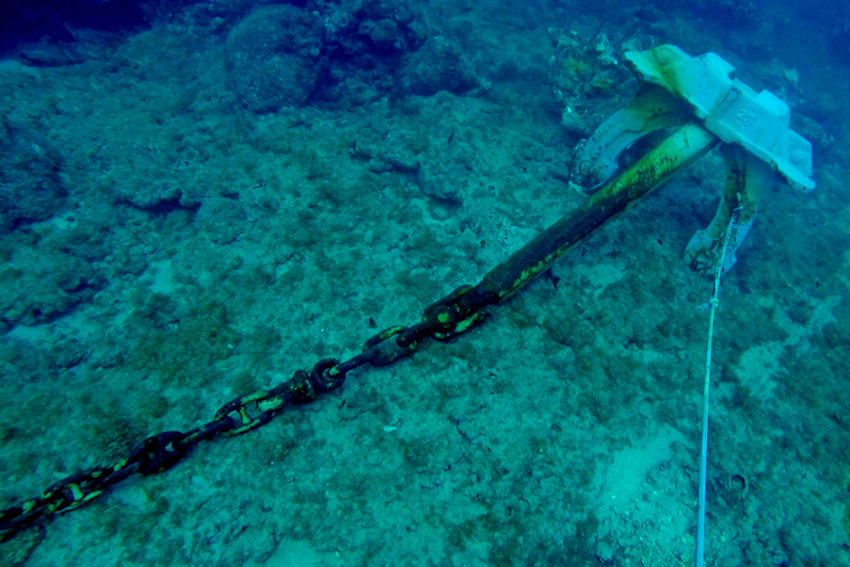Anchors cause damage to seafloor

High-resolution mapping has produced the first ever global estimates of coastal habitat damage caused by anchoring.
The COVID-19 pandemic resulted in port congestion around the world, leading to unprecedented bottlenecks in maritime traffic and intensive anchoring of high-tonnage ships.
Researchers from NIWA, University of Auckland (UOA), and Auckland University of Technology (AUT) wanted to characterise the footprint and extent of anchoring on the seafloor, which has never been quantified before. Using sonars and ship tracking data, they documented the morphology of anchoring outside Picton’s marine port on New Zealand’s South Island, revealing an extensive and persistent physical impact.
They discovered that every time a high-tonnage ship anchors, it can excavate the seafloor up to 80cm, displacing enough sediment to fill an Olympic-sized swimming pool. Comparison data shows that the damage remains for at least four years.
Scaled-up globally, this equates to at least 6,000km2 of impacted seabed. However, this is probably a “substantial underestimate,” says the study’s lead author Dr Sally Watson, a marine geophysicist at NIWA and lecturer in marine science at UOA.
“Picton is a low congestion port but in higher congestion ports, such as Wellington or Long Beach, USA, the footprint extends over a much wider region. In fact, the number could be as high as 20,000km2 of damaged seabed worldwide,” Dr Watson said.
The numbers are comparable to that of trawling because even though trawling occurs over a greater area, anchoring is done much more frequently, for longer, and penetrates more deeply.

“The anchor digs into the seabed and is moved around as the ship drifts on the surface, dragging the chain and causing ‘broomstick-like’ abrasions, killing off marine species and releasing carbon stores from the sediment. This has far-reaching implications for already stressed ecosystems and carbon cycling.
“It seems that this problem is ‘out of sight, out of mind’ because the environmental footprint of anchoring is not yet considered in official reporting of global human impacts on the marine ecosystem,” Dr Watson said.
Dr Marta Ribó, a marine geologist and lecturer in geoscience at the AUT School of Science, is the study’s co-author. She said that new solutions are needed to reduce the destruction of anchorage on the seafloor.
“The impact of regular anchoring worldwide likely represents a major driver of shallow marine habitat degradation. This brings up questions about how anchor sites are chosen. Do we know what kind of habitat anchors are being dropped onto or is it done without regard to what’s below the surface?
“We also don’t yet have a snapshot of cruise ships because our analysis was done during the height of the pandemic when most had ceased operating. Cruise ships are large and numerous, and they often drop anchor in pristine areas. Now knowing what we do, we must ask ourselves whether we want to encourage this kind of tourism,” Dr Ribó said.
Dr Watson said that their research has unearthed the ‘hidden cost’ of ship anchoring.
“To meet the climate goals outlined in COP26, countries have agreed to work towards a net-zero goal for global maritime shipping. As seaborne trade is projected to quadruple by 2050 and cruise ships begin to sail once more, new solutions are needed to avoid irreversible damage to marine habitats caused by this unreported problem,” she said.
The study was published in Nature Scientific Reports.